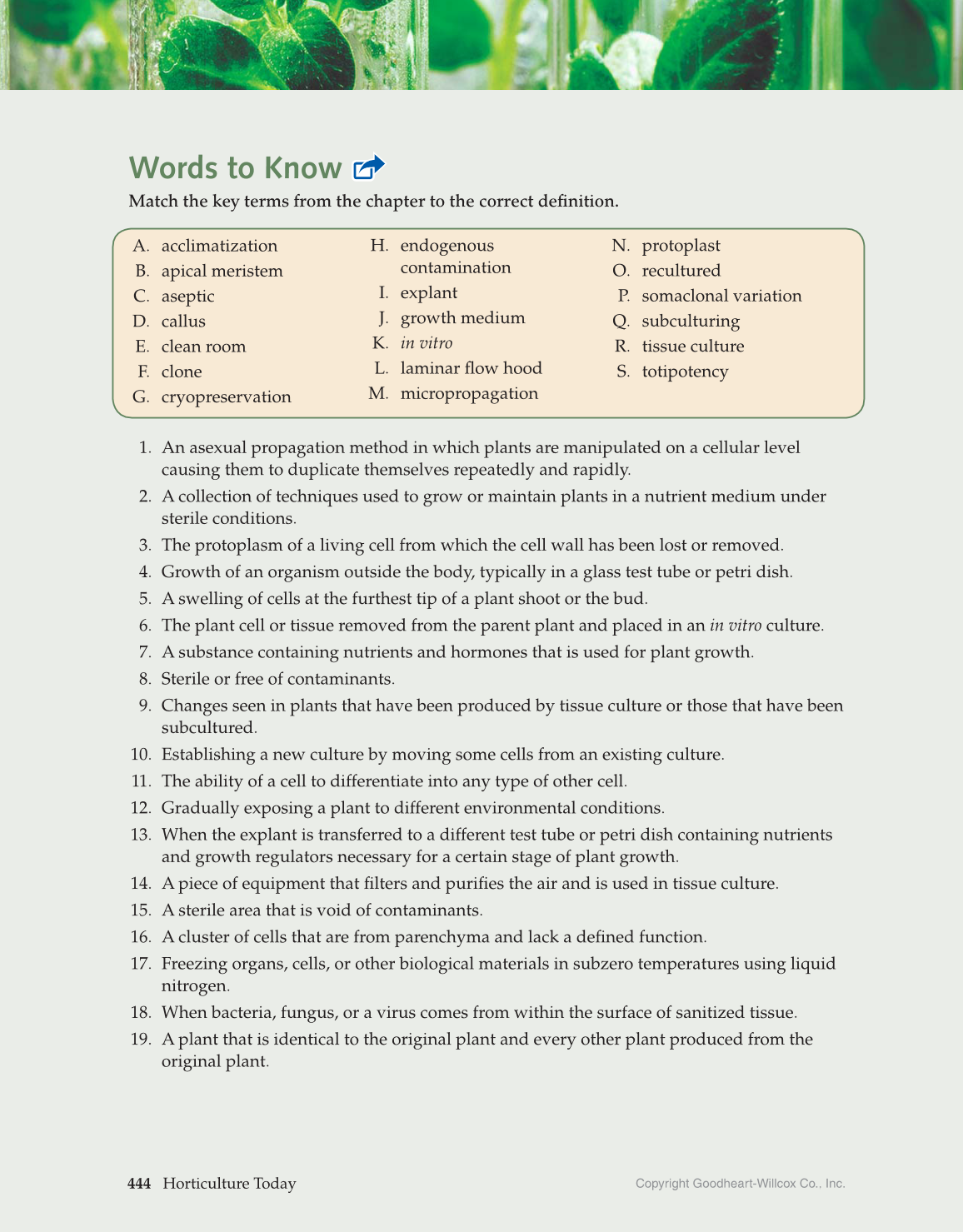444 Horticulture Today
Copyright Goodheart-Willcox Co., Inc.
Words to Know
Match the key terms from the chapter to the correct defi nition.
A. acclimatization
B. apical meristem
C. aseptic
D. callus
E. clean room
F. clone
G. cryopreservation
1. An asexual propagation method in which plants are manipulated on a cellular level
causing them to duplicate themselves repeatedly and rapidly.
2. A collection of techniques used to grow or maintain plants in a nutrient medium under
sterile conditions.
3. The protoplasm of a living cell from which the cell wall has been lost or removed.
4. Growth of an organism outside the body, typically in a glass test tube or petri dish.
5. A swelling of cells at the furthest tip of a plant shoot or the bud.
6. The plant cell or tissue removed from the parent plant and placed in an in vitro culture.
7. A substance containing nutrients and hormones that is used for plant growth.
8. Sterile or free of contaminants.
9. Changes seen in plants that have been produced by tissue culture or those that have been
subcultured.
10. Establishing a new culture by moving some cells from an existing culture.
11. The ability of a cell to differentiate into any type of other cell.
12. Gradually exposing a plant to different environmental conditions.
13. When the explant is transferred to a different test tube or petri dish containing nutrients
and growth regulators necessary for a certain stage of plant growth.
14. A piece of equipment that fi lters and purifi es the air and is used in tissue culture.
15. A sterile area that is void of contaminants.
16. A cluster of cells that are from parenchyma and lack a defi ned function.
17. Freezing organs, cells, or other biological materials in subzero temperatures using liquid
nitrogen.
18. When bacteria, fungus, or a virus comes from within the surface of sanitized tissue.
19. A plant that is identical to the original plant and every other plant produced from the
original plant.
H. endogenous
contamination
I. explant
J. growth medium
K. in vitro
L. laminar fl ow hood
M. micropropagation
N. protoplast
O. recultured
P. somaclonal variation
Q. subculturing
R. tissue culture
S. totipotency
